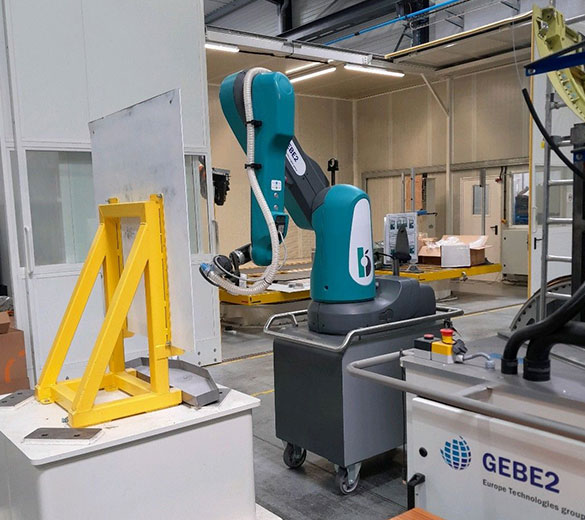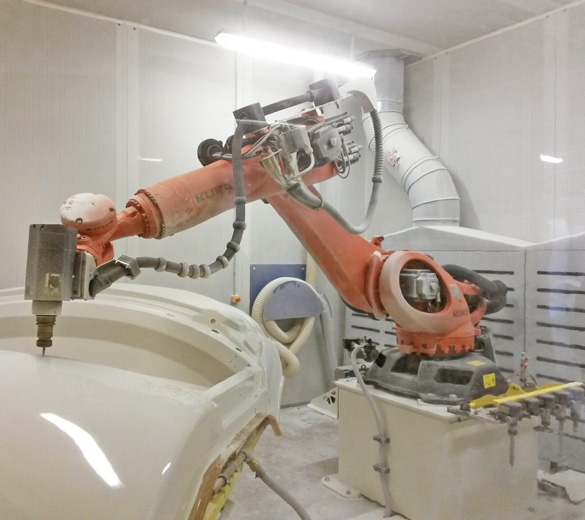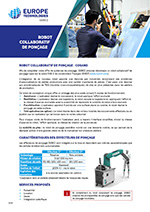©Photo credit -page header – Adobe Firefly
Between COBOT and industrial robot, what equipment should you choose for your production?
Collaborative robots, aka COBOTs, are designed to work in direct interaction with humans, while industrial robots are generally isolated to perform automated tasks without human intervention. Nevertheless, automation is crucial in industry to improve efficiency and productivity, and comparing COBOTs and industrial robots helps you understand their respective roles so you can better integrate them into your manufacturing processes.

Industrial COBOTs
COBOTs are ergonomically designed and equipped with advanced safety technologies to enable safe interaction with humans. COBOTs are easily reprogrammable and can be quickly redeployed for different tasks, offering great flexibility. The COBOT, also known as a collaborative robot, and the operator can then work together in complete safety.
COBOTs are used in a variety of sectors. GEBE2 offers a collaborative robot for finishing processes such as sanding and polishing. These tasks frequently require human interaction. We integrate our processes with an ISYBOT cobot that operates in 3 modes: assistance, restitution and parallelisation.
Industrial robots
Industrial robots are robust and powerful, designed for demanding tasks requiring strength and precision. These robots can perform large-scale repetitive tasks with precision and speed.
GEBE2 supplies turnkey robots integrating a wide range of finishing processes and assembly processes: machining, trimming, deburring, grinding, drilling, sanding, insert fitting, welding, etc. These processes involve many stages, and can include external factors such as end-effector changes.

COBOT vs Industrial Robot
COBOTs integrate safety measures to avoid collisions, while industrial robots require physical and immaterial safety barriers to protect workers. They generally have a lower initial cost and lower maintenance costs, offering a rapid ROI, unlike industrial robots, which are often more expensive.
Finally, collaborative robots are more flexible and can be easily adapted to changes in production, unlike industrial robots, which require more complex reprogramming.
COBOTs and industrial robots offer distinct advantages in terms of safety, cost, flexibility and impact on human labour. Depending on your specific production needs, our team will help you choose the right equipment for the nature of your tasks and production.






